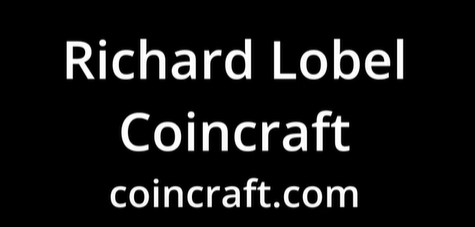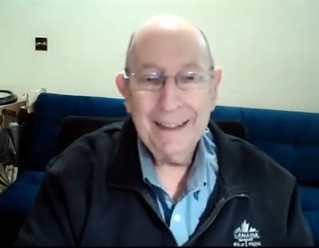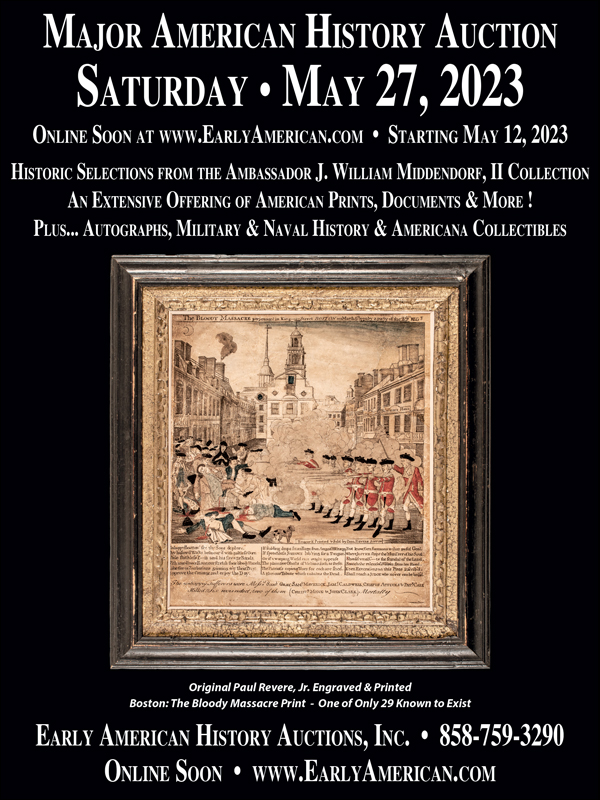
PREV ARTICLE
NEXT ARTICLE
FULL ISSUE
PREV FULL ISSUE
RICHARD LOBEL INTERVIEW, PART ONEGreg Bennick's latest interview for the Newman Numismatic Portal is with London dealer Richard Lobel. Here's the first of six parts, where Richard talks about becoming a coin collector and dealer. -Editor Greg Bennick: Hi, everybody. My name is Greg Bennick. I'm with the Newman Numismatic Portal. And I'm doing a series of interviews with important numismatists from around the world. Today, I've got Richard Lobel with me. And Richard and I are going to be discussing Coincraft, his store and his history in coins. Richard, it's so nice to see you today.
Greg Bennick: Well, I'm really glad too. It's great to see your face and to hear your voice. Well, let's just dive in. Tell me about Coincraft. My understanding is that you started Coincraft, which is your store now, but that you started it as a store in 1955 in -- Richard Lobel: Well, I started -- No. I was in collecting coins before 1955, but I date my starting in the coin business and the rest from my first paid subscription to a coin publication in 1955, still the world's greatest coin publication, the Numismatic Scrapbook magazine Greg Bennick: That's wonderful. Richard Lobel: I was a young kid at summer camp. I had collected coins and all of a sudden I've got this 300-page thing in front of me using words I don't understand. By the end of summer camp, it was threadbare, but I loved it. Greg Bennick: And when you say the Numismatic Scrapbook from that era in 1955, 300 pages was one issue. I mean, those things were thick back then! Richard Lobel: Oh yes, 360 sometimes. It was done by the Hewitt brothers in Chicago. And they were actually printers, and they had the Numismatic Scrapbook magazine, and it was so successful that they hated it, so they never sent out renewal notices. You had to remind them to renew your subscription. Greg Bennick: Amazing. Amazing. So, when you started in 1955 then, so I guess my understanding was that you started collecting and then formed Coincraft, meaning that started in Boston, but maybe it did not. Maybe it… Richard Lobel: No, I started -- I was 10 and a half years old, and I went to the bank in Boston where I was living, and I bought a $50 sack of pennies, 5,000 pennies, and I went through them. And I found one worth a dollar, which is fine. And I took it to the dealer, and he offered me 50 cents again, which I thought was honest. And I went home and I said, I carried that sack of pennies. I ruined my eyes. I rolled it up. I made 49 since he made 50 cents. I'm on the wrong side of the cabinet. And so I went into the coin business, buying and selling. Greg Bennick: That's amazing. Now you were how old at that point? You said 10 and a half…. Richard Lobel: 10 and a half years old. Greg Bennick: Okay. So, did you end up going to university then, or did you immediately get into buying and selling coins professionally and just stick with that? Richard Lobel: I was buying and selling coins when I was at university. My father paid most of my bills, but I was a very wild youth. I have to put that. And the money I earned on the coins helped me doing some of the other things I wanted to do. But I loved it. I was lucky my father went to university with a man called Morris Murray Gould. Now he had a coin company, but he was also a numismatist. He wrote the Whitman, the first black books on Hawaiian coins, on Alaskan coins, on Puerto Rican coins, and he gave me a box of old coins. Rubbish. I mean, but to me, there was a French coin, it was a hundred years old or other coins. I mean, it wasn't worth a lot of money, but it was fascinating. And I'm fascinated with history. Greg Bennick: That's wonderful. Now did you finish university? Did you go and finish college before delving even further into coins? Richard Lobel: Yeah, I went to Boston University. They kicked me out twice, and I dropped out once before I got my degree. And when I dropped out the first time, I got a job in a bank as a stock transfer clerk. That's when computers were first coming in, and you took a pencil and checked the numbers across. And I got $41.31 cents a week take home pay. And one day, in my lunch, I'd go around to all the coin shops -- Boston had a lot of coin shops. And one day, I bought from Joe, I forget who -- Anyway, I bought a 1911 Canadian dime for $10. I dipped it and I sold it to JJ Teaparty, Eddie Leaventhal, for $90. And I realized I'd made $80 then, which was basically twice what I was earning at the bank. So, I decided it was better to be in the coin business full time. About the InterviewerGreg Bennick (www.gregbennick.com) is a keynote speaker and long time coin collector with a focus on major mint error coins. Have ideas for other interviewees? Contact him anytime on the web or via instagram @minterrors.
To watch the complete video, see:
To read the complete transcript, see:
Wayne Homren, Editor The Numismatic Bibliomania Society is a non-profit organization promoting numismatic literature. See our web site at coinbooks.org. To submit items for publication in The E-Sylum, write to the Editor at this address: whomren@gmail.com To subscribe go to: https://my.binhost.com/lists/listinfo/esylum All Rights Reserved. NBS Home Page Contact the NBS webmaster 
|


